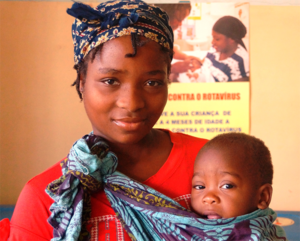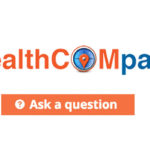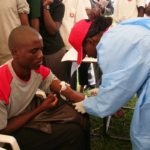Healthy Timing and Spacing of Pregnancies: Spotlighting “The Other End of the Spectrum” this Mother’s Day
In honor of Mother’s Day, the Health Communication Capacity Collaborative (HC3) is launching its newest resource, Addressing AMA and HP Pregnancies: An HTSP Implementation Kit.
 As a mother myself, the timing of this announcement is particularly rewarding.
As a mother myself, the timing of this announcement is particularly rewarding.
The implementation kit (I-Kit) is designed to encourage and help program managers use social and behavior change communication (SBCC) to discuss the risks of advanced maternal age (AMA) and high parity (HP) pregnancy in their family planning and maternal and child health programs.
As HC3’s recent research in Togo and Niger shows, AMA and HP pregnancies occur frequently and are often perpetuated in areas of sub-Saharan Africa by religious, cultural and social norms that deny women family planning decision-making power. Having lived in or visited many sub-Saharan African countries over the last 13 years, I can unequivocally attest to the dangerous impact such gender-restrictive norms have on women’s – and their family’s – health, safety and well-being, and to the need to challenge such patterns. Significant as they are, these belief systems are only half of the equation.
 AMA and HP pregnancies pose serious health risks to mothers and their babies – including death – particularly when quality antenatal care and skilled attended deliveries lack. However, the risks associated with these maternities are poorly understood by women, men and health providers themselves. Further, AMA and HP pregnancies remain largely omitted from HTSP programs and countries’ family planning agendas. Such programs continue to instead focus on delaying first births until after a woman is 18, and following a 24-month birth-to-pregnancy (BTP) intervals.
AMA and HP pregnancies pose serious health risks to mothers and their babies – including death – particularly when quality antenatal care and skilled attended deliveries lack. However, the risks associated with these maternities are poorly understood by women, men and health providers themselves. Further, AMA and HP pregnancies remain largely omitted from HTSP programs and countries’ family planning agendas. Such programs continue to instead focus on delaying first births until after a woman is 18, and following a 24-month birth-to-pregnancy (BTP) intervals.
While these practices are undeniably important, it leaves the questions: Who works with women at the other end of the childbearing spectrum? Who works with and advocates for women who are expected to have children into their 30s and 40s, or to have as many children as they are physically able? Where is the guidance on how to speak to women, couples, community leaders and others about the risks of these later pregnancies?
With the goal of protecting mothers throughout their reproductive lives, HC3’s I-Kit responds to these questions. The I-Kit comprises a series of adaptable SBCC tools dedicated solely to addressing AMA and HP. These include:
- A client brochure (adapted for conservative audiences and less conservative audiences)
- A guide for working with community-based groups
- A counseling guide for clinic-based healthcare providers
- A counseling guide for community health workers
- A counseling guide reminder poster
- A guide for researchers
- A guide for journalists
- Infographics for health priority decision-makers
Pulling these SBCC tools together is the I-Kit’s overarching guide for program managers. This guide summarizes each of the above tools’ content and suggested use, as well as SBCC, AMA and HP context and background.
To learn more about AMA, HP and the I-Kit, please join HC3 for its webinar on these topics from 9 to 10 am on May 25, 2016. A French-language webinar is planned for June 2016.
For additional reading on AMA and HP pregnancy, see the following HC3 resources:
- A Focused Desk Review of Knowledge, Attitudes and Behaviors Related to Pregnancies in Three High-Risk Situations: Advanced Maternal Age, High Parity and Rapid Repeat Pregnancies after Abortion or Miscarriage
- Engaging Families for Healthy Pregnancies – Global Evidence on Health Outcomes and Secondary Analysis of DHS Data from Two Countries in West Africa








Leave a Reply
Want to join the discussion?Feel free to contribute!